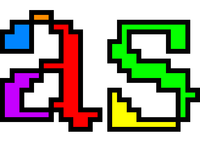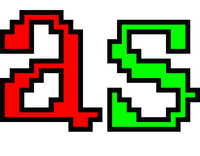Difference between revisions of "Publications/boutry.15.icip"
From LRDE
| (9 intermediate revisions by the same user not shown) | |||
| Line 3: | Line 3: | ||
| date = 2015-05-14 |
| date = 2015-05-14 |
||
| authors = Nicolas Boutry, Thierry Géraud, Laurent Najman |
| authors = Nicolas Boutry, Thierry Géraud, Laurent Najman |
||
| − | | title = How to Make |
+ | | title = How to Make nD Images Well-Composed Without Interpolation |
| booktitle = Proceedings of the IEEE International Conference on Image Processing (ICIP) |
| booktitle = Proceedings of the IEEE International Conference on Image Processing (ICIP) |
||
| address = Québec City, Canada |
| address = Québec City, Canada |
||
| + | | pages = 2149 to 2153 |
||
| lrdeprojects = Olena |
| lrdeprojects = Olena |
||
| lrdenewsdate = 2015-05-14 |
| lrdenewsdate = 2015-05-14 |
||
| − | | abstract = Latecki et al. have introduced the notion of well-composed images, i.e., a class of images free from the connectivities paradox of discrete topology. Unfortunately natural and synthetic images are not a priori well-composed, usually leading to topological issues. Making any |
+ | | abstract = Latecki et al. have introduced the notion of well-composed images, i.e., a class of images free from the connectivities paradox of discrete topology. Unfortunately natural and synthetic images are not a priori well-composed, usually leading to topological issues. Making any <math>n</math>D image well-composed is interesting becauseafterwards, the classical connectivities of components are equivalent, the component boundaries satisfy the Jordan separation theorem, and so on. In this paper, we propose an algorithm able to make <math>n</math>D images well-composed without any interpolation. We illustrate on text detection the benefits of having strong topological properties. |
| lrdeinc = Publications/boutry.15.icip.inc |
| lrdeinc = Publications/boutry.15.icip.inc |
||
| lrdepaper = http://www.lrde.epita.fr/dload/papers/boutry.15.icip.pdf |
| lrdepaper = http://www.lrde.epita.fr/dload/papers/boutry.15.icip.pdf |
||
| type = inproceedings |
| type = inproceedings |
||
| id = boutry.15.icip |
| id = boutry.15.icip |
||
| + | | identifier = doi:10.1109/ICIP.2015.7351181 |
||
| bibtex = |
| bibtex = |
||
@InProceedings<nowiki>{</nowiki> boutry.15.icip, |
@InProceedings<nowiki>{</nowiki> boutry.15.icip, |
||
| Line 23: | Line 25: | ||
month = sep, |
month = sep, |
||
address = <nowiki>{</nowiki>Qu\'ebec City, Canada<nowiki>}</nowiki>, |
address = <nowiki>{</nowiki>Qu\'ebec City, Canada<nowiki>}</nowiki>, |
||
| + | pages = <nowiki>{</nowiki>2149--2153<nowiki>}</nowiki>, |
||
| + | doi = <nowiki>{</nowiki>10.1109/ICIP.2015.7351181<nowiki>}</nowiki>, |
||
abstract = <nowiki>{</nowiki>Latecki et al. have introduced the notion of well-composed |
abstract = <nowiki>{</nowiki>Latecki et al. have introduced the notion of well-composed |
||
images, i.e., a class of images free from the |
images, i.e., a class of images free from the |
||
Latest revision as of 21:20, 5 February 2021
- Authors
- Nicolas Boutry, Thierry Géraud, Laurent Najman
- Where
- Proceedings of the IEEE International Conference on Image Processing (ICIP)
- Place
- Québec City, Canada
- Type
- inproceedings
- Projects
- Olena
- Date
- 2015-05-14
Abstract
Latecki et al. have introduced the notion of well-composed images, i.e., a class of images free from the connectivities paradox of discrete topology. Unfortunately natural and synthetic images are not a priori well-composed, usually leading to topological issues. Making any D image well-composed is interesting becauseafterwards, the classical connectivities of components are equivalent, the component boundaries satisfy the Jordan separation theorem, and so on. In this paper, we propose an algorithm able to make D images well-composed without any interpolation. We illustrate on text detection the benefits of having strong topological properties.
Documents
The initial image:
The zero-level-set of the Laplacian:
The zero-level-set of the Laplacian (zoomed on):
The zero-level-set of the Laplacian made well-composed:
The zero-level-set of the Laplacian made well-composed (zoomed on):
The source code able to make images digitally well-composed is available here:
[src_icip_2015.tar.gz]
The source code of the proposed algorithm has been implemented using our image processing C++ library Milena, which is free software under the GNU Public License v2.
Bibtex (lrde.bib)
@InProceedings{ boutry.15.icip,
author = {Nicolas Boutry and Thierry G\'eraud and Laurent Najman},
title = {How to Make {$n$D} Images Well-Composed Without
Interpolation},
booktitle = {Proceedings of the IEEE International Conference on Image
Processing (ICIP)},
year = {2015},
month = sep,
address = {Qu\'ebec City, Canada},
pages = {2149--2153},
doi = {10.1109/ICIP.2015.7351181},
abstract = {Latecki et al. have introduced the notion of well-composed
images, i.e., a class of images free from the
connectivities paradox of discrete topology. Unfortunately
natural and synthetic images are not a priori
well-composed, usually leading to topological issues.
Making any $n$D image well-composed is interesting because,
afterwards, the classical connectivities of components are
equivalent, the component boundaries satisfy the Jordan
separation theorem, and so on. In this paper, we propose an
algorithm able to make $n$D images well-composed without
any interpolation. We illustrate on text detection the
benefits of having strong topological properties.}
}





